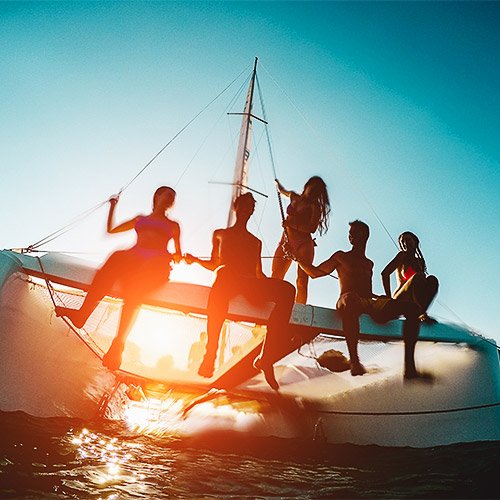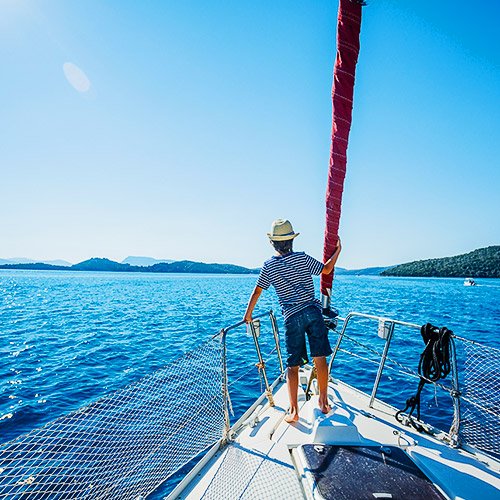Unfortunately, it doesn’t always turn out the way we had wished. Some hiccups here and there may end up ruining your sailing vacation experience. To ensure this doesn’t happen to you, this article shares top 8 safety tips for smooth sailing so you can spend some quality time on the water and have a memorable sailing vacation experience.
Why taking a sailing vacation?
One of the best ways to get away from your busy lifestyle and forget your troubles for a while is to take a sailing vacation. Sailing can be very relaxing to both your body and mind thanks to the quietness of the sea and whisper of the wind. Imagine getting a heaping dose of sunshine surrounded by the sea? There is nothing more one would ask for.
Being on the ocean gives you a special chance to connect with nature away from the noisy and restless cities. You also get a chance to see beautiful sea creatures surrounding you. When sailing, you get to forget about the complexities of life and just focus on interacting with nature as you unwind. It’s the only place you can fully indulge in some quietness as you focus on the things that matter to you.
When travelling on the sea, you are not limited to one destination. You can take advantage of the moment to explore different delightful sailing routes. In fact, you can travel anywhere from sunbakes beaches, islands, bays to rustic Harbors. The choice is yours!
Golden tips for a safe sailing vacation
As you plan to have a good time sailing and enjoying all the benefits associated with sailing, here are some super amazing tips to ensure your sailing vacation remains one to remember.
- Keep an eye on the weather forecast
- Prepare in advance
- Sale where comfortable
- Share your float
- Safety equipment
- First Aid Kit
- Carry a toolbox
- Learn how to swim
1. Watch the weather and tides
You need to pay particular attention to the wind strength and direction before setting sail, so check the weather forecast each time you leave the marina or anchorage. Visibility is another key factor you must consider when it comes to sailing, because in foggy weather or at night could be difficult to understand and see the potential obstacles in front of your boat.
After setting sail, do not forget to keep an eye on the weather changes, so watch the horizon and any weather app you have at hand. Usually, the coast guard is broadcasting on Channel 16 if there is any storm or bad weather coming your way. Keep in mind that the weather can be very unpredictable in many parts of the world and your destination is not exempted. Therefore, any time you notice a storm ahead, please don’t take chances, head back to marina or port and prepare the boat for storm.
It’s better to be safe than sorry.
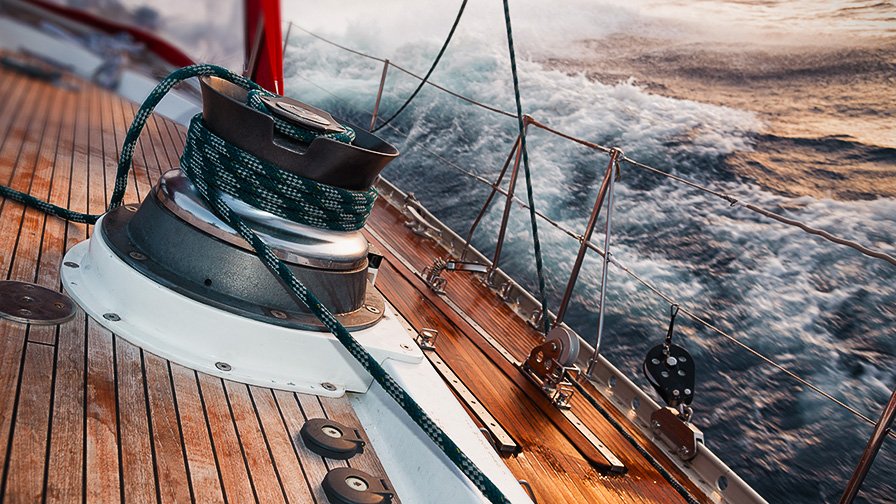
Bad weather at sea
capetanos.com2. Have a pre-departure checklist
No matter how experienced you are, it’s important to have a pre-departure checklist. You need to pack everything you will be needing during your sailing but make sure not to over pack. Sailing, especially for longer periods, can require a lot of different items and if you don’t have a checklist, you are likely to forget something important.
Don't prepare the checklist at the last minute. In fact, it's better to prepare it before you pack anything. Then mark every item as you pack. Before departure, check your list and confirm you have packed everything without forgetting anything. In other words, if you are sailing in summer, prepare your summer clothes but also the bad weather ones.
A good dry sailing equipment will keep you comfortable during bad weather.

Pre-departure checklist
capetanos.com3. Sail where comfortable
While it’s sometimes great to get out of your comfort zone, sailing also comes with great responsibility for you and your crew members, so don’t take hazardous actions if you don’t feel ready for them. Prioritize your safety and your crew, in a manner that everybody enjoys the experience. You are there to have fun, hence sail at a pace you are comfortable with, know your surroundings, check the maps or the mobile apps, and keep an eye on other boaters.
One of the most popular mobile apps for sailing is Navionics. It helps you plan the legs, search for bays, marinas, water depth and many more. In other words, be on the watch at all times.

Sail where comfortable
capetanos.com4. Share your float
Just the way you share some important information with a loved one when travelling out of town, do the same before heading to the sea. That information can be very useful in case you need help while out there, especially if you are sailing solo. The passage plan should include crucial information such as the route you intend to take, boat type and model, a means of contact to reach you in case of an emergency and an estimation of the time you plan to be one the water.
Make sure you share this information to a trusted person before you head out to the sea. For longer passages is best to contact the coast guard while leaving the port and advise them about your route, number of passengers, destinations and approximate time of arrival.
Keep the VHF radio open on channel 16 at all time while sailing and also would be nice to have also a backup radio. Mobile phones only work when you are on the coast. For offshore sailing it is recommended to have a satellite phone, for example Inmarsat.

Share your float
capetanos.com5. Safety equipment
A boat is never considered safe for sailing if it doesn’t have the necessary safety equipment. This is a rule that every sailor should be aware of. Even if we are discussing about your own boat or if you rent a boat, before departure you must check the safety equipment like life raft or life jackets.
If your guests walk for the first time on a boat, take time to explain them how safety equipment works. It will be very important when bad weather occurs.
If you have children onboard, they must always wear the life jacket when underway. Everybody onboard must know how to use the life jacket, life raft and fire extinguisher.
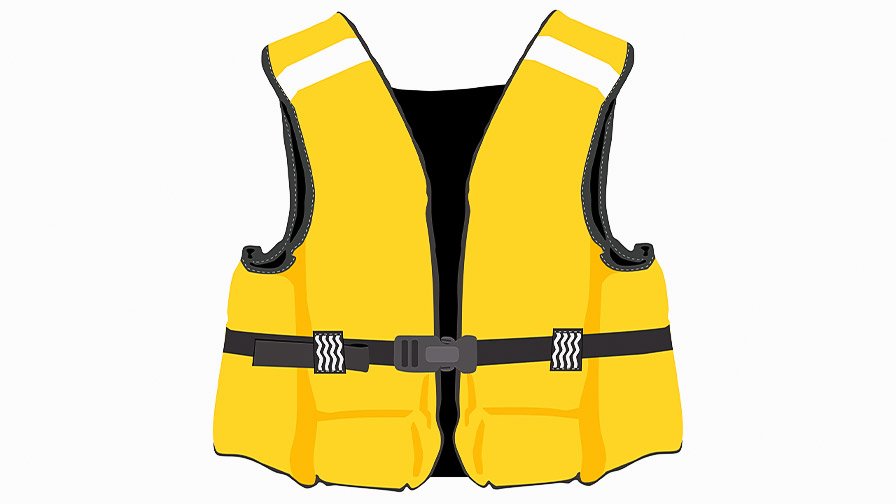
Life Jacket
capetanos.com6. Have a first aid kit
The equipment in a first aid kit is only useful if you know how to use it. Therefore, consider familiarizing yourself with the kit and learn some basics. They can help you save a life even after your sailing vacation. The antiseptic, plasters and bandages among other items in the kit can assist you a lot if you accidentally hurt yourself when sailing.
Many sailing schools offer also first aid courses and in some countries is mandatory to have such a course before becoming a captain.
When briefing the crew before departure, ask everyone if they have a medical condition, if they have the medicine with them and how they use it, so you could act accordingly in case of need. If someone ‘s life is threatened by an accident and you need advice from a doctor, use de boat radio for help (PAN PAN MEDICO).
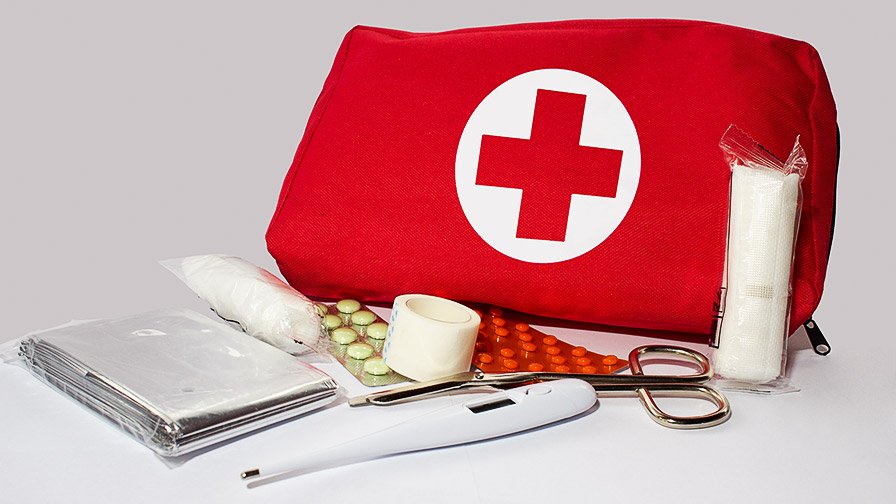
First Aid Kit
capetanos.com7. Carry a toolbox
Just like a first aid kit, a toolbox is essential during a sailing trip no matter how short you estimate it to be. Don’t forget that you cannot always pull over and fix her. So, as you prepare for the sailing vacation, spare some time and learn how to make some minor boat repairs.
Knowing how to handle a few small glitches on your boat can really go a long way. Even if you don’t experience any mechanical problem, the peace that comes with knowing you are on top of things is on another level.
Your toolbox should contain essential engine spares such as hoses, belts, filters and fuses. Just like with your car, before departure check the essentials on the boat, like leaks, oil and fuel filters, belts tension, levels for fuel, water, oil and gas.
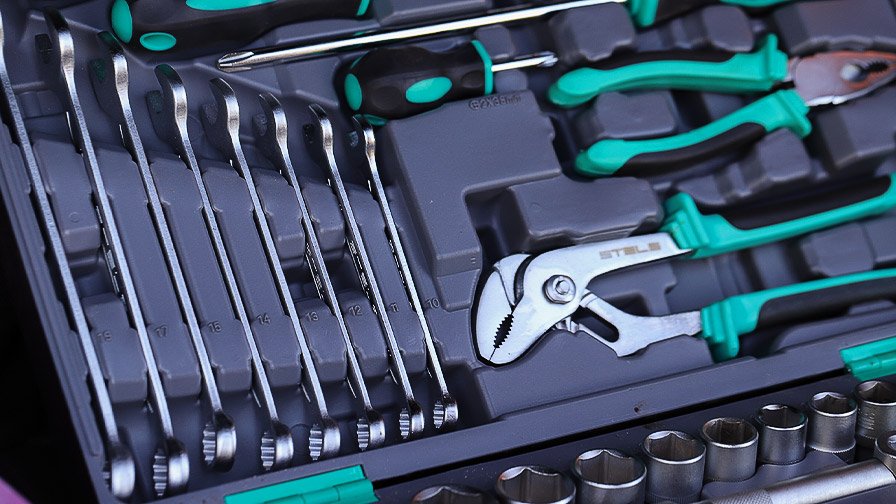
Marine Toolbox
capetanos.com8. Learn how to swim
Every boater should learn to swim. It’s an invaluable skill if you plan to spend some quality time on the water without being scared of drowning. The main benefit of being a good swimmer is that it can save your life.
On the other hand, swimming can be lots of fun. Besides, if you intend to combine sailing with diving or snorkeling from your boat, then you have to be a skilled swimmer.
If you have admired the underwater world in videos, then it is the best reason to try snorkeling or diving at least once in your life. Have the chance to closely observe the beautiful sea creatures and see the beauty of the underwater ecosystem. Live corals are also one of the most sought-after seawater creatures and come in various shapes, sizes, and colors. Besides seeing the live corals, you also get to swim along with the marine life.

Snorkeling is fun
capetanos.comKey takeaway
Next time you plan for a sailing vacation, be sure to revise the above safety tips. They can help you experience an amazing sailing vacation such that when leaving, you will already be planning for another. Keeping it safe, following the rules and regulations will make your holiday unforgettable.
Your skills will improve with every day spent at sea. Don’t hesitate to ask for help in case of need, there are many experienced sailing enthusiasts which will be more than glad to advice you.
And above all, don’t forget to have a great time doing it – that's what it’s all about.

